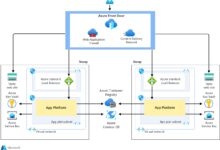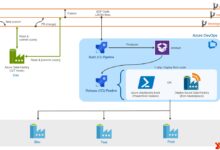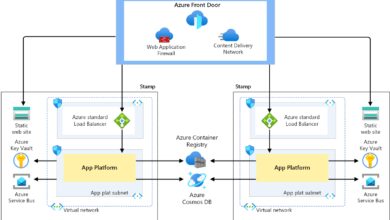Azure What Is: 7 Powerful Insights You Must Know Now
If you’ve ever wondered ‘Azure what is,’ you’re not alone. Millions of businesses and developers are turning to Microsoft Azure for scalable, secure, and innovative cloud solutions. Let’s break it down in plain English—no jargon overload.
Azure What Is: A Complete Introduction to Microsoft’s Cloud Powerhouse

When people ask, ‘Azure what is,’ they’re usually looking for more than just a definition. They want to understand how Azure fits into today’s digital landscape. Simply put, Microsoft Azure is a cloud computing platform that allows organizations to build, deploy, and manage applications through a global network of data centers managed by Microsoft. It competes directly with Amazon Web Services (AWS) and Google Cloud Platform (GCP), offering a robust suite of services ranging from virtual machines to AI and machine learning tools.
Origins and Evolution of Azure
Azure was first announced in 2008 under the name “Windows Azure” and officially launched in February 2010. Initially focused on application hosting, it has since evolved into one of the most comprehensive cloud platforms in the world. Over the years, Microsoft has expanded Azure’s capabilities significantly, integrating hybrid cloud solutions, edge computing, and advanced analytics.
- Originally designed as a Platform-as-a-Service (PaaS).
- Rebranded to Microsoft Azure in 2014.
- Now supports Infrastructure-as-a-Service (IaaS), PaaS, and Software-as-a-Service (SaaS) models.
“Azure is not just a cloud platform; it’s a bridge between on-premises infrastructure and the future of digital transformation.” — Satya Nadella, CEO of Microsoft
Core Components of the Azure Ecosystem
The strength of Azure lies in its modular architecture. Users can pick and choose services based on their needs. Key components include compute, storage, networking, databases, analytics, and identity management. Each service is designed to work seamlessly with others, enabling end-to-end solutions.
- Compute: Virtual Machines, Azure Functions, App Services.
- Storage: Blob Storage, Disk Storage, Data Lake.
- Networking: Virtual Network, Load Balancer, DNS.
Azure What Is and How It Transforms Modern Businesses
Understanding ‘Azure what is’ becomes clearer when we see how companies use it to innovate. From startups to Fortune 500 enterprises, Azure enables agility, cost-efficiency, and rapid scalability. Whether it’s hosting websites, running complex data analytics, or deploying AI models, Azure provides the tools needed to stay competitive.
Scalability and Flexibility for Growing Enterprises
One of the biggest advantages of Azure is its ability to scale resources up or down based on demand. This elasticity means businesses only pay for what they use, avoiding the high costs of over-provisioning hardware. For example, an e-commerce site can automatically scale during holiday seasons and scale back afterward.
- Auto-scaling features adjust resources in real time.
- Pay-as-you-go pricing model reduces upfront investment.
- Supports both Linux and Windows environments.
Hybrid Cloud Capabilities That Set Azure Apart
Unlike some competitors, Azure excels in hybrid cloud scenarios—where part of the infrastructure runs on-premises and part in the cloud. Azure Stack allows organizations to run Azure services locally, ensuring compliance, low latency, and data sovereignty.
- Azure Arc extends cloud management to on-premises servers.
- Enables consistent operations across environments.
- Ideal for industries like finance and healthcare with strict regulatory requirements.
Azure What Is: Key Services and Their Real-World Applications
To truly grasp ‘Azure what is,’ it helps to explore its most widely used services. These tools form the backbone of modern cloud computing and are leveraged across industries for everything from disaster recovery to intelligent automation.
Virtual Machines and Compute Power
Azure Virtual Machines (VMs) allow users to run Windows or Linux instances in the cloud. They’re ideal for migrating existing applications without re-architecting them. Developers can choose from a wide range of VM sizes optimized for general-purpose, memory-intensive, or GPU-based workloads.
- Available in multiple tiers: Basic, Standard, and Premium.
- Supports custom images and automated deployment via templates.
- Integrates with DevOps pipelines for CI/CD workflows.
Azure Blob Storage for Unstructured Data
Blob Storage is Azure’s solution for storing massive amounts of unstructured data like images, videos, logs, and backups. It’s highly durable, with redundancy options across regions, making it perfect for disaster recovery and archival purposes.
- Three access tiers: Hot, Cool, and Archive.
- Supports lifecycle management policies to automate cost savings.
- Used by media companies for content delivery networks (CDNs).
Azure Active Directory for Identity Management
Azure AD (now Microsoft Entra ID) is a cloud-based identity and access management service. It enables single sign-on (SSO), multi-factor authentication (MFA), and conditional access policies to secure user logins across applications.
- Centralizes user management across cloud and on-premises apps.
- Integrates with Office 365, Salesforce, and thousands of SaaS apps.
- Provides advanced threat detection through Identity Protection.
Azure What Is: Security, Compliance, and Trust
Security is often a top concern when adopting cloud services. So, when someone asks ‘Azure what is,’ they’re also implicitly asking, ‘Is it safe?’ The answer is yes—Azure is built with security at its core, offering enterprise-grade protections that meet global compliance standards.
azure what is – Azure what is menjadi aspek penting yang dibahas di sini.
Built-In Security Features and Threat Protection
Azure offers a layered security model that includes network firewalls, encryption at rest and in transit, DDoS protection, and advanced threat analytics. Azure Security Center (now part of Microsoft Defender for Cloud) provides unified security management and threat protection across hybrid cloud workloads.
- Real-time monitoring and vulnerability assessments.
- Automated security recommendations and remediation.
- Integration with SIEM tools like Azure Sentinel (now Microsoft Sentinel).
Compliance Standards and Global Certifications
Azure complies with more regulatory standards than any other cloud provider, including GDPR, HIPAA, ISO 27001, SOC 1/2/3, and FedRAMP. This makes it a preferred choice for government agencies, healthcare providers, and financial institutions.
- Covers over 140 compliance offerings globally.
- Transparent audit logs and reporting tools.
- Region-specific data residency controls.
“Microsoft invests over $1 billion annually in cybersecurity research and development.” — Microsoft Trust Center
Azure What Is: AI, Machine Learning, and Innovation
Another dimension of ‘Azure what is’ involves its role in driving innovation through artificial intelligence and machine learning. Azure isn’t just about infrastructure—it’s a platform for building intelligent applications that learn, predict, and automate.
Azure Cognitive Services for Intelligent Apps
Azure Cognitive Services provide pre-built APIs for vision, speech, language, and decision-making. Developers can add features like facial recognition, sentiment analysis, and text-to-speech without needing deep AI expertise.
- Computer Vision API analyzes images and extracts insights.
- Text Analytics detects sentiment, key phrases, and entities.
- Speech Services enable voice commands and transcription.
Machine Learning Studio for Custom Models
Azure Machine Learning is a cloud-based environment for training, deploying, and managing ML models. It supports both code-first (Python, R) and drag-and-drop (Designer) interfaces, making it accessible to data scientists and developers alike.
- AutoML automates model selection and hyperparameter tuning.
- Integrated with MLOps for model lifecycle management.
- Supports ONNX for cross-platform model deployment.
AI in Industry: Real-World Use Cases
Companies are using Azure AI to transform operations. For example, Rolls-Royce uses Azure IoT and AI to monitor jet engines in real time. Retailers use recommendation engines powered by Azure ML to personalize customer experiences.
- Healthcare: AI-powered diagnostics and patient monitoring.
- Manufacturing: Predictive maintenance using sensor data.
- Retail: Dynamic pricing and inventory forecasting.
Azure What Is: Pricing Models and Cost Management
Cost is a critical factor when evaluating cloud platforms. Understanding ‘Azure what is’ includes knowing how it’s priced and how to optimize spending. Azure offers flexible pricing options, but without proper management, costs can spiral.
Pay-As-You-Go vs. Reserved Instances
The most common pricing model is pay-as-you-go, where you’re billed hourly or per minute for resources used. For predictable workloads, Reserved Virtual Machine Instances offer significant discounts (up to 72%) when committed to one- or three-year terms.
- Pay-as-you-go: Ideal for development and testing.
- Reserved Instances: Best for production workloads with steady usage.
- Spot VMs: Up to 90% off for interruptible workloads like batch processing.
Cost Management Tools and Best Practices
Azure Cost Management + Billing provides dashboards, budgets, and alerts to track and control spending. You can allocate costs by department, project, or team using tags, and identify underutilized resources for optimization.
- Set monthly budgets with email alerts.
- Use Advisor recommendations to save money.
- Right-size VMs and delete unused disks to reduce waste.
“On average, customers save 20-30% on cloud costs after implementing Azure Cost Management tools.” — Microsoft Case Studies
Azure What Is: Getting Started and Learning Resources
Now that you understand ‘Azure what is,’ the next step is getting started. Whether you’re a developer, IT professional, or business leader, there are resources to help you learn and implement Azure effectively.
Free Tier and Azure Free Account
Microsoft offers a free Azure account with $200 in credits for 30 days and access to over 55 always-free services. This is perfect for experimenting with VMs, databases, and AI tools without spending a dime.
- Includes 750 hours of Linux and Windows VMs per month.
- Free tier of Blob Storage and Cosmos DB.
- No credit card required for some free offers.
Learning Paths and Certification Programs
Microsoft Learn provides structured learning paths for Azure roles like Administrator, Developer, and Architect. Certifications such as AZ-900 (Azure Fundamentals) and AZ-104 (Azure Administrator) are highly valued in the IT job market.
azure what is – Azure what is menjadi aspek penting yang dibahas di sini.
- AZ-900: Entry-level exam covering cloud concepts.
- AZ-204: For developers building cloud applications.
- AZ-305: For solution architects designing cloud infrastructures.
Community Support and Documentation
The Azure community is vast and active. From official Microsoft Azure documentation to forums like Stack Overflow and Reddit, help is always available. Microsoft also hosts events like Microsoft Ignite and Azure Tech Community webinars.
- Comprehensive API references and code samples.
- Troubleshooting guides and best practice articles.
- GitHub repositories with open-source Azure templates.
What is Azure and why should I use it?
Azure is a cloud computing platform that provides scalable infrastructure, AI tools, and enterprise-grade security. You should use it if you need reliable, flexible, and secure cloud services that integrate well with Microsoft products like Office 365 and Windows Server.
How does Azure compare to AWS?
While AWS has a larger market share, Azure excels in hybrid cloud integration, enterprise support, and seamless compatibility with Microsoft environments. Many organizations choose Azure for its strong Active Directory integration and Windows VM performance.
Is Azure difficult to learn?
Not at all. Azure offers beginner-friendly tools like the Azure portal, free learning paths, and a free account with credits. With consistent practice and the right resources, anyone can gain proficiency in Azure within a few months.
Can I run Linux on Azure?
Yes, Azure fully supports Linux distributions including Ubuntu, CentOS, Red Hat Enterprise Linux, and SUSE. You can deploy Linux VMs, containers, and serverless functions just as easily as Windows-based services.
What industries use Azure the most?
Azure is widely used in healthcare, finance, government, education, and manufacturing. Its compliance certifications and hybrid capabilities make it ideal for regulated industries that require data control and security.
So, when you ask ‘Azure what is,’ the answer goes far beyond a simple definition. It’s a dynamic, secure, and innovative cloud platform that powers digital transformation across the globe. From startups to governments, Azure offers the tools, scalability, and reliability needed to thrive in the modern digital era. Whether you’re exploring cloud computing for the first time or looking to optimize your current infrastructure, Azure provides a compelling solution with endless possibilities. The journey starts with understanding the fundamentals—and now you’re well on your way.
azure what is – Azure what is menjadi aspek penting yang dibahas di sini.
Further Reading:









